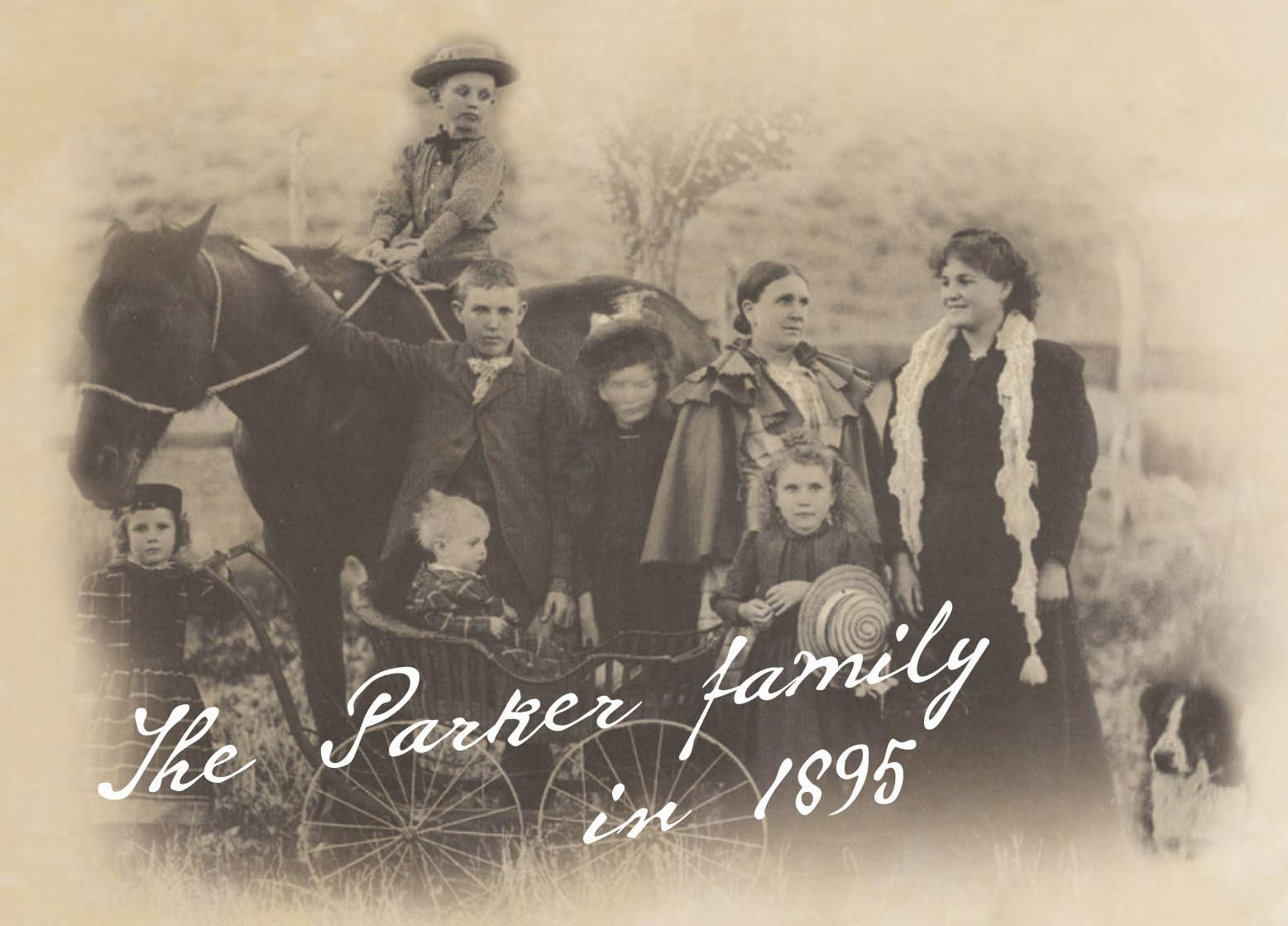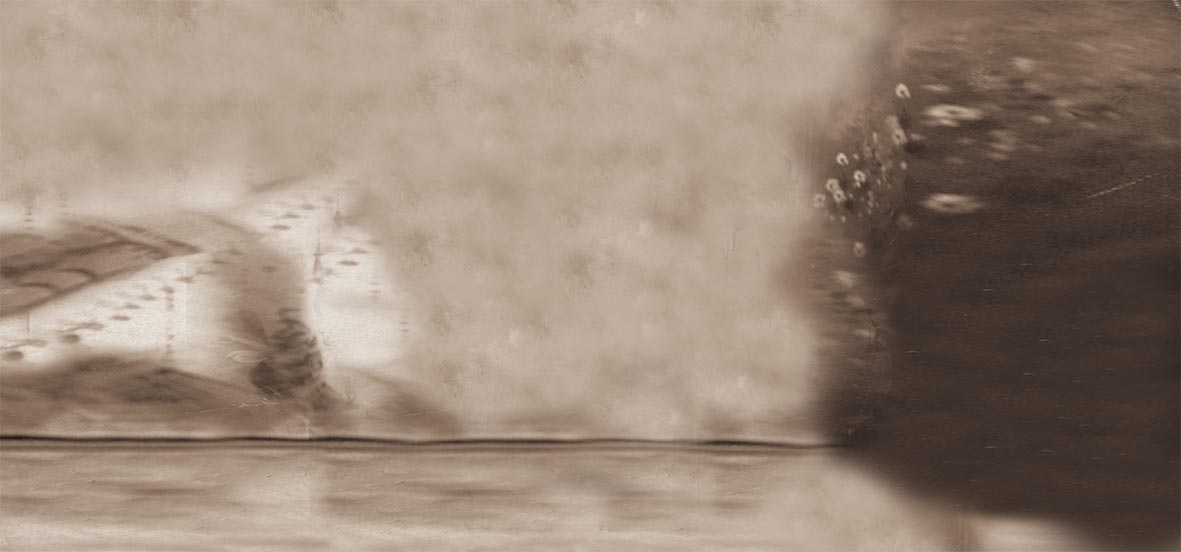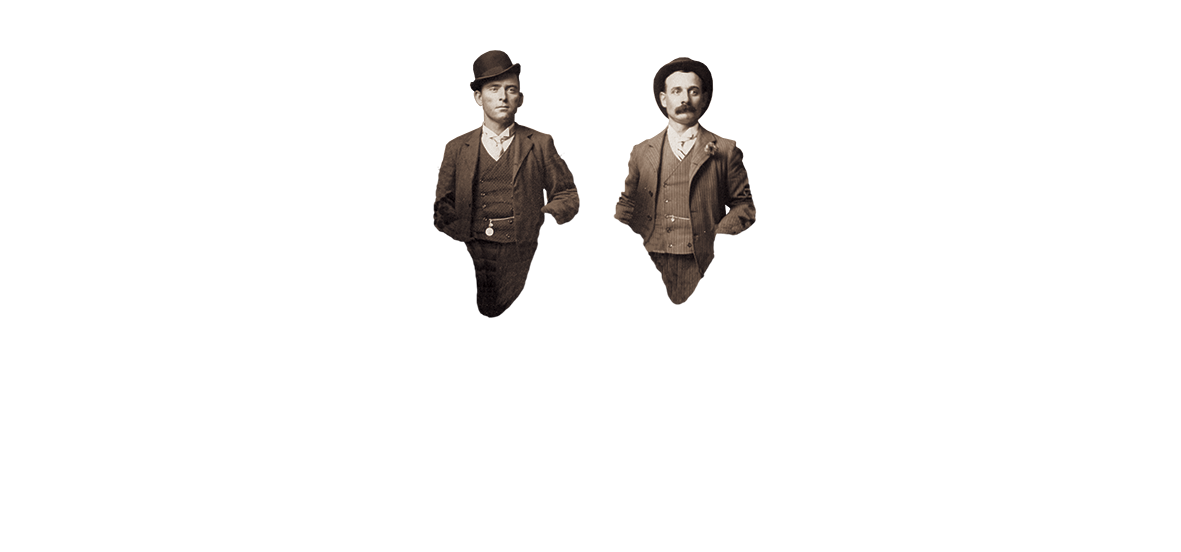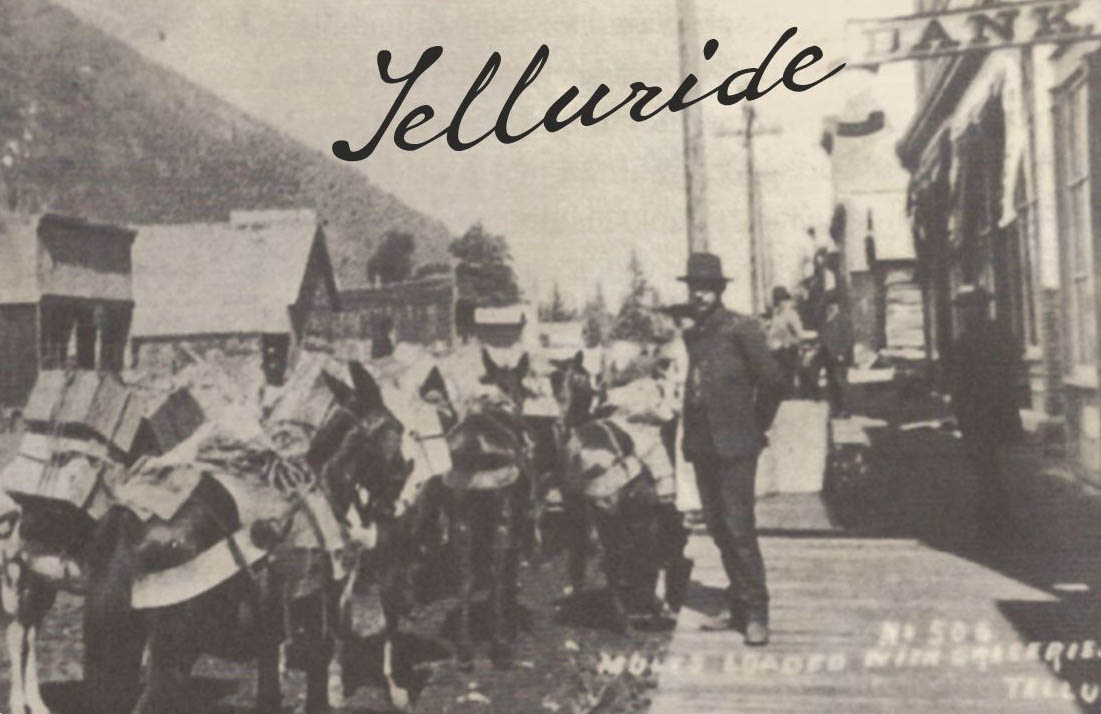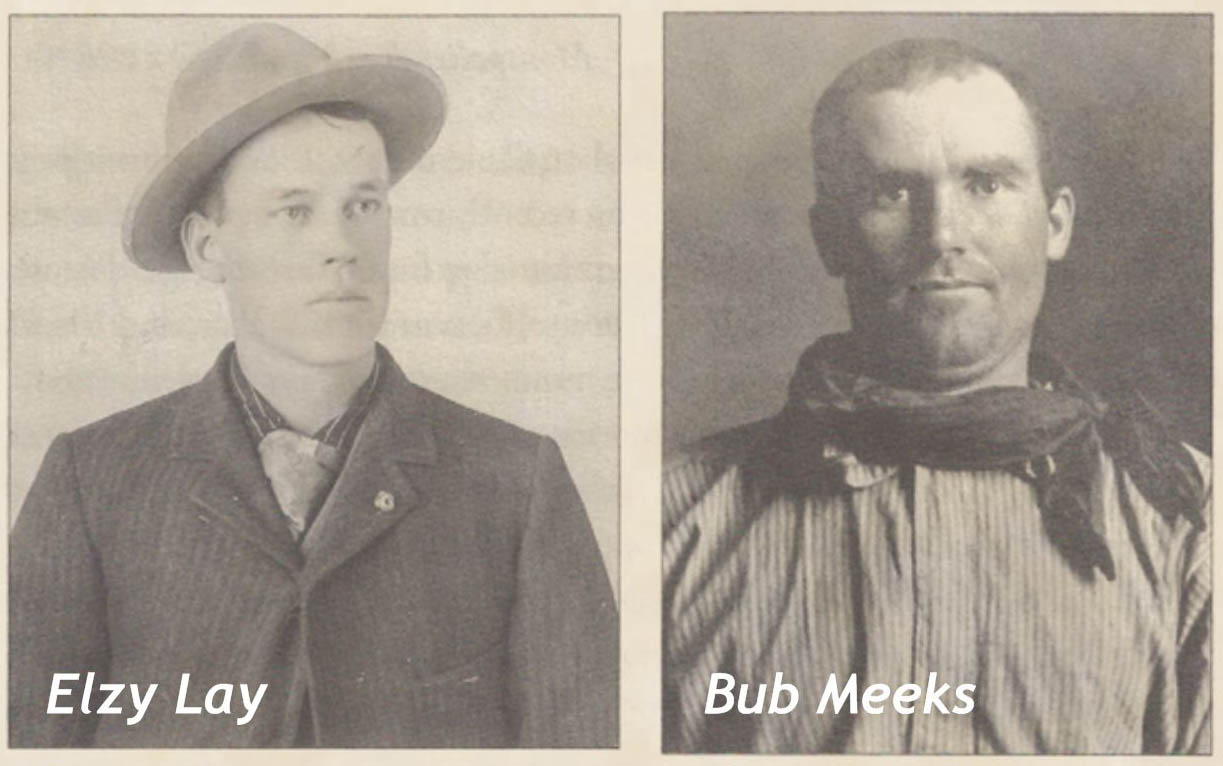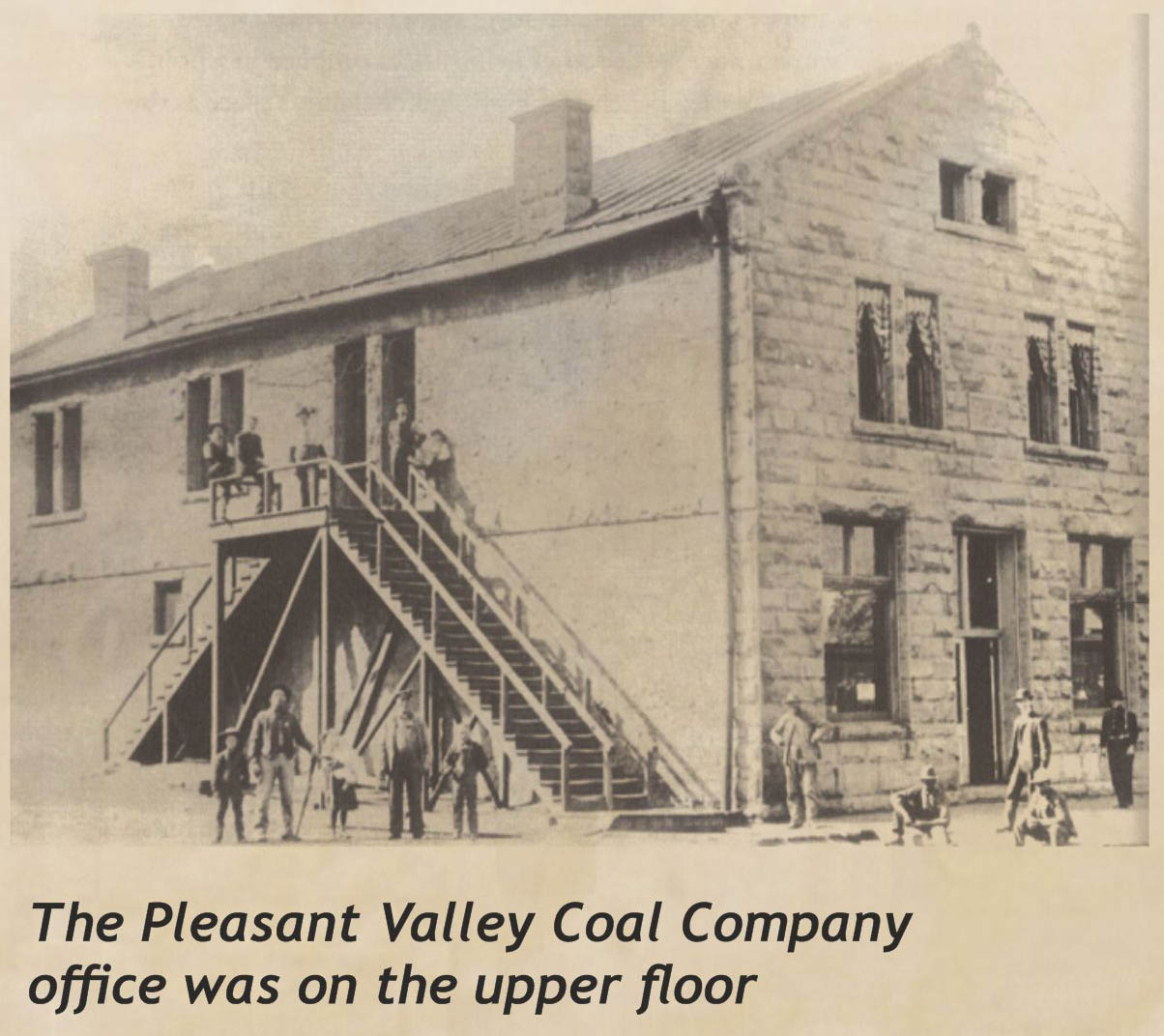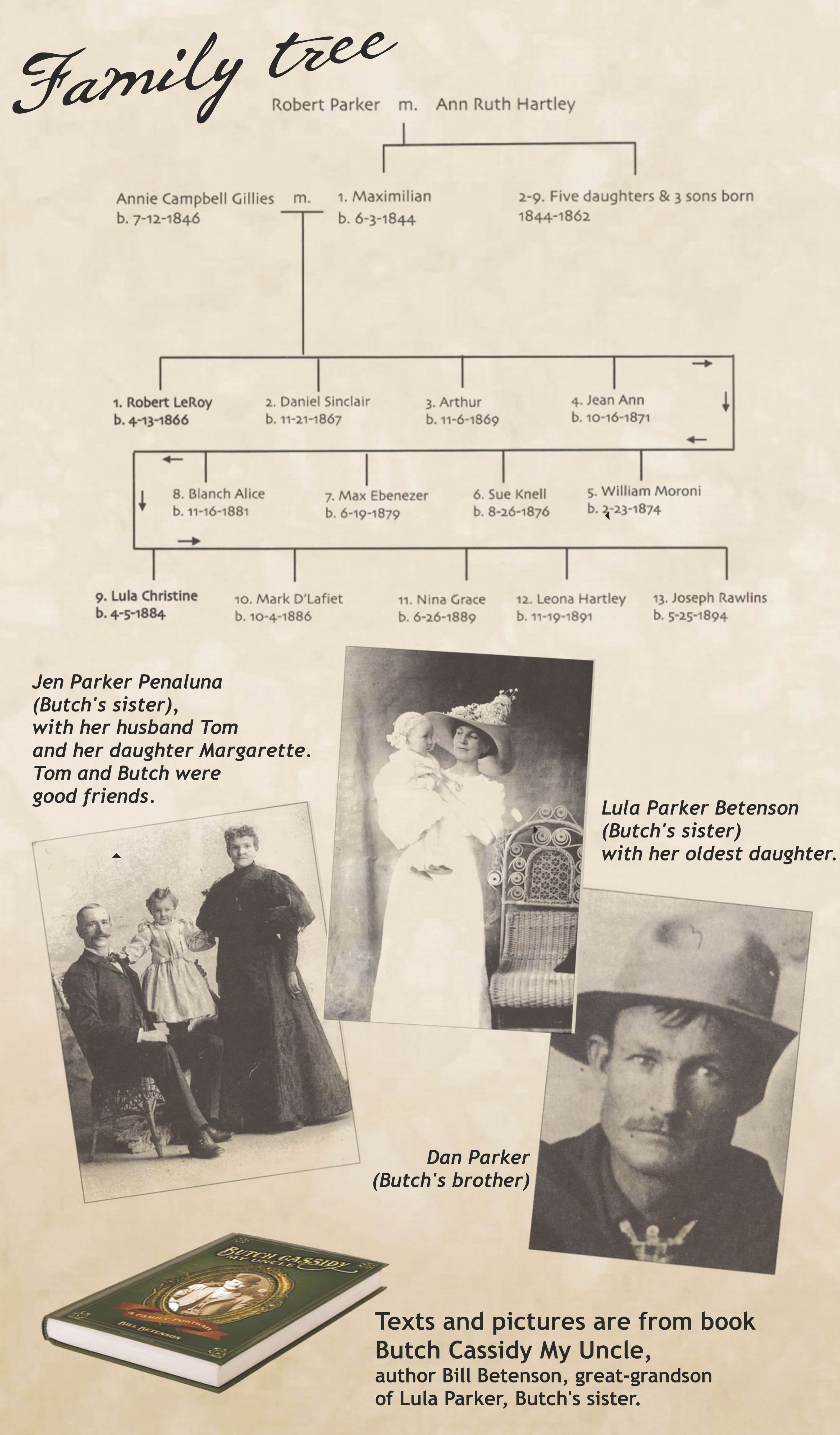August 13: Montpelier Bank Robbery
The Salt Lake Herald reported that the trio considered robbing banks in Logan, Utah, and Evanston, Wyoming before deciding on the Montpelier, Idaho bank. Butch was familiar with the Montpelier area as well as the neighboring town of Cokeville. Prior to the robbery, Butch, Elzy, and Bub worked on a ranch operated by Mrs. P. Emelle, whose husband was a jeweler in Montpelier. This ranch was eight miles north of Cokeville. While working for Mrs. P. Emelle, the three bandits used the aliases George Ingerfield (Butch Cassidy), Willie McGinnis (Elzy Lay), and Marty Makensie (Bub Meeks). They quit their jobs two days before the robbery and headed for Montpelier.
Meeks stayed in a hotel to keep an eye on the bank, while Cassidy and Lay camped outside town. The next day Cassidy and Lay met Meeks for dinner at the hotel and observed the town. The trio stopped at O'Conner's Saloon at 2:30 on the afternoon of August 13, 1896, for some liquid courage, and waited for the bank to close. It had been seven years since Butch had robbed a bank.A posse immediately organized and pursued, but couldn't keep up with Butch's relays of fresh horses. The posse traced the outlaws' trail for nearly a week before giving up. According to Meeks family sources, the bandits fled to Commissary Ridge near the headwaters of the Green River, then down to Piedmont, and finally to Brown's Hole.1897August 13: Montpelier Bank RobberyAs promised, a portion of the Montpelier loot was used to hire defense attorneys for Matt Warner during his murder trial in September 1896. Warner was convicted not of murder, but of voluntary manslaughter, and was sentenced to six years. He was released for good behavior after three years and able to start a new life. When he was released from prison he was threatened with a second murder charge. Utah Governor Heber M. Wells made a deal with Warner that he would help him if he would arrange for Butch to turn himself in.On Wednesday, April 21, 1897, the Rio Grande Western passenger train No. 2 arrived at the coal mine offices. Butch and Elzy executed their plan with precision. E.L. Carpenter and two employees carried the payroll from the train across the tracks to the mine officebreak him out if he wanted. Warner wrote back telling him to hold off and to hire some good lawyers. Butch, being out of prison for only eight months, was flat broke. He knew of an ideal lawyer though, his old pal Douglas Preston. He would need money to hire him, however. Butch, along with his friends Elzy Lay and Bub Meeks, decided to rob a bank. Bub Meeks had a vested interest because his brother Davis was married to the daughter of the other prisoner held with Warner, William Wall.Things did not fare well for Bub Meeks. In June of 1897, Bub was suspected of helping to rob the Guild Store in Fort Bridger and was subsequently captured by Deputy Calverly. He was recognized as a suspect in the Montpelier bank robbery and transported to Idaho in September to face charges. At the trial, in the county seat of Paris, Idaho, of the three eyewitnesses, Cashier Grover Gray, Bookkeeper Richard Groo, and Teller Bud Mcintosh, only Mcintosh could make a positive identification. Nineteen-year-old Mcintosh wore strong eyeglasses for his nearsightedness, but he had studied Meek's face carefully during the robbery. Butch Cassidy was positively identified from his Wyoming prison mugshot by all three witnesses. Elzy Lay, who had been outside during most of the robbery, was not positively identified.In September 1896, Butch and Meeks were spotted in Loa, Utah, about two hundred miles south of Salt Lake City. They were carrying a large wad of money and said they were headed south to purchase cattle and drive them to Vernal.On September 7, 1897, Bub was sentenced to thirty-five years in the Idaho State Penitentiary in Boise, under his given name of Henry Meeks. His sentence was later commuted to twelve years, but after an escape attempt, it was doubled to twenty-four. Bub made another escape attempt which resulted in him being shot in the leg, requiring amputation. He was later transferred to the Idaho Insane Asylum, where even with an amputated leg he made a successful escape this time. He returned home to the Fort Bridger area of Wyoming where he settled on his ranch. He became more and more paranoid as his mental health continued to decline. Idaho officials never did come looking for him, possibly because they were glad to be rid of such a troublesome inmate. In his declining years, his own family had him committed to the Wyoming State Mental Hospital in Evanston, where he passed away in 1912. Some reports indicate that Butch planned to help Bub, but nothing ever materialized. Some say he planned to rob the Beckwith Bank in Evanston to fund the operation, but his plans were revealed and were therefore thwarted.September 1896Butch spent the winter of 1896-97 in Robbers' Roost on the lower Green River in Utah. Other well-known outlaw hideouts were Brown's Park on the northern Utah/Colorado border, and Hole in the Wall in Northern Wyoming. Butch and Elzy planned to rob the Pleasant Valley Coal Company payroll in Castle Gate near Price, Utah the following spring. Elzy and Butch had initially considered robbing the payroll the summer before, but knew it would require careful planning down to the smallest detail. Rather than rush, they took nearly a year to plan. The robbery had to be executed in broad daylight, in the midst of many possibly armed miners who were waiting for their pay. Their getaway would require navigating down the narrow Price Canyon, so during their stay at Robbers' Roost they trained horses specifically for their escape.Just before closing at 3:15 p.m., Butch Cassidy and Bub Meeks entered the bank. Elzy Lay stood outside as a lookout. Butch pulled his revolver and demanded access to the area behind the teller's cage which was granted through a door in the hallway. Bub stayed outside the teller's cage with his revolver drawn. Cassidy quickly entered the vault, gathered the gold and silver, but couldn't find any currency. He demanded that the teller, A.N. “Bud” Macintosh, tell him the location of the currency. When Macintosh responded that there was no currency, Butch hit him over the eye with his revolver, calling him a “God damn liar!” Macintosh then revealed the location of the currency. Ironically, Bub Meeks scolded Cassidy for using unnecessary violence. Butch put all of the loot, later determined to be $7,142 plus some gold and silver into a special bag he had concealed under his vest. Outside the bank, Elzy tried to force cashier G.C. “Grover” Gray and his friend Ed Hoover into the bank and was having some trouble. Meeks, who was watching from inside the bank, told Lay to “Hit the son of a bitch over the head” if he didn't cooperate. Gray and Hoover entered the bank and were forced to face the wall.
Cassidy and Meeks left the bank, mounted horses Lay had readied, and they fled east out of town. Deputy Sheriff Fred Cruikshank grabbed the closest transportation, which happened to be a bicycle, and followed, hoping to see in which direction the bandits fled. He kept them in view and saw that they headed towards Montpelier Canyon.
A posse immediately organized and pursued, but couldn't keep up with Butch's relays of fresh horses. The posse traced the outlaws' trail for nearly a week before giving up. According to Meeks family sources, the bandits fled to Commissary Ridge near the headwaters of the Green River, then down to Piedmont, and finally to Brown's Hole.
